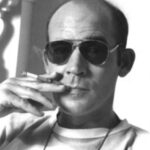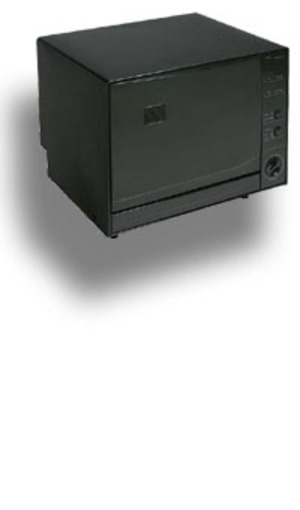There has been very few critical attention paid to North-American writer Shirley Jackson. The first book-length study on her life and works was published long ten years after her death, in 1975. It is Lenemaja Friedman’s Shirley Jackson, a still important and useful work despite the fact it does not mention witchcraft nor anything related to the subject. Her only biography was published in 1988, i.e., Judy Oppenheimer’s Private Demons: The Life of Shirley Jackson. Even though the author tries to relate Ms. Jackson’s life with her fiction, it is not really a literary study. It has been said to seek the sensational instead of the factual, sometimes using the supernatural themes on her fiction to try to describe real events concerning the life of its author. She even speculates on the possibility of childhood incest in order to explain Ms. Jackson gothic-prone strain.
Sensationalistic or not, Ms. Jackson was said, by some, to be a witch. Rumors of supernatural events circulated about her. According to American journalist and novelist David Gates (In:Sullivan, 1994), Ms. Jackson was “widely believed to have broken the leg of publisher Alfred Knopf by sticking pins into a voodoo doll” (p.71). Bennington College student Elizabeth Frank recalls “a rumor that. . . [Ms. Jackson] had turned a certain male faculty member into a pumpkin” (p.71).
In the flood of mail that followed the publication of the short story The Lottery (1948) in The New Yorker, Ms. Jackson was labeled – for better or for worse: “un-American, perverted, and modern” (Sullivan, 1994, p.73). Ms. Jackson’s reputation was further bewitched by commentaries such as the one made by writer Harvey Breit: “she was able to be natural even about the supernatural” (1948, p. 117-118). And she loved that! Apparently she loved playing with her audience’s expectations (Norjordet, 2005). Who would expect loving and light hearted family memory books with titles such as Raising Demons and Life Among the Savages?
Ms. Jackson’s range confused some readers. As it has often happened in (literary) history (and needless to say it still does), many writers are blatantly confused with their characters for many distinct reasons. Even though Ms. Jackson mainly wrote of prejudice, neurosis and identity, for some reasons – this research also seeks to elucidate – an evil image was created about her. This image persisted for long “[one] Jackson encouraged, for complicated reasons, that her work is full of ghosts and witches” (Lethem, 1997, p.2).
The truth is few of her stories really contained suggestions of supernatural events. Whereas the bulk of exploratory critical work seeks to unravel the supernatural aspects of her works, this one does not, on the contrary, it acknowledges the obvious reasons that have lead other researchers to undertake such a path, but it deviates and rows against the stream. Very few of her short fiction pieces, indeed, and possibly just one of her novels, i.e., The Haunting of Hill House from 1959, as a matter of fact, explicitly produces otherworldly or supernatural aspects.
It seems to be indisputable that the supernatural was, indeed, important to her. She, herself, purposefully “undermined” her reputation by stating that she wrote about a not very rational struggle that “may be the devil or may be intellectual enlightenment” (Norjordet, 2005, p.1). It is sensible to assume that she sometimes paradoxically uses the supernatural as a metaphor to allude to and to explain everyday ordeals. She used witchcraft and folklore to shed light on what she called the “inhuman world”
Ms. Jackson’s strong suit was, in fact, people; in other words, psychology and society were explored revealing the evils the lie just underneath their surface. Her characters were:
“… dispossessed, misunderstanding or thwarting one another compulsively, people colluding absently in monstrous acts. She had a jeweler’s eye for the microscopic degrees by which a personality creeps into madness or a relationship turns from dependence to exploitation” (Lethem, 1997, p.2).
According to mythologian Barbara G. Walker: “Any unusual ability in a woman instantly raise(s) a charge of witchcraft” (Walker, 1983). Even though she was not a witch of any kind, she held an extensive library on the subject of witchcraft in her home. Her agoraphobic tendencies immensely contributed to accentuate the growing mystique around and about her. It was said that her house was her cave, her small social circle, her coven, and her (many) cats, her “familiars”.
American literary scholar, essayist and short story writer Jack Sullivan sensibly concludes: “Jackson’s real witchcraft is her fiction” (1994, p. 71). I agree. To better understand her world, the imaginary and the real, we must understand what made her such a witch, and that is mainly the story behind the publication of the short story The Lottery and all its repercussions.
References
Breit, Harvey. Shirley Jackson. The New York Times June 26, 1949, 15. Rpt. in Modern American Literature, Vol. II. Ed. Dorothy Nyren Curley et al. New York: Continuum, 1989.
Friedman, Lenemaja. Shirley Jackson. Boston: Twayne, 1975.
Lethem, Jonathan. Monstrous Acts and Little Murders. Salon, 1997.
Norjordet, Havard. The Tall Man in the Blue Suit: Witchcraft, Folklore, and Reality in Shirley Jackson’s The Lottery, or The Adventures of James Harris. Unpublished Thesis. University of Oslo, 2005.
Oppenheimer, Judy. Private Demons: The Life of Shirley Jackson. New York: Putnam, 1988.
Sullivan, Jack. The Haunted Mind of Shirley Jackson. Twilight Zone August 1994, 71-74.
Walker, Barbara G. The Woman’s Encyclopedia of Myths and Secrets. San Francisco: Harper, Collins, 1983.




